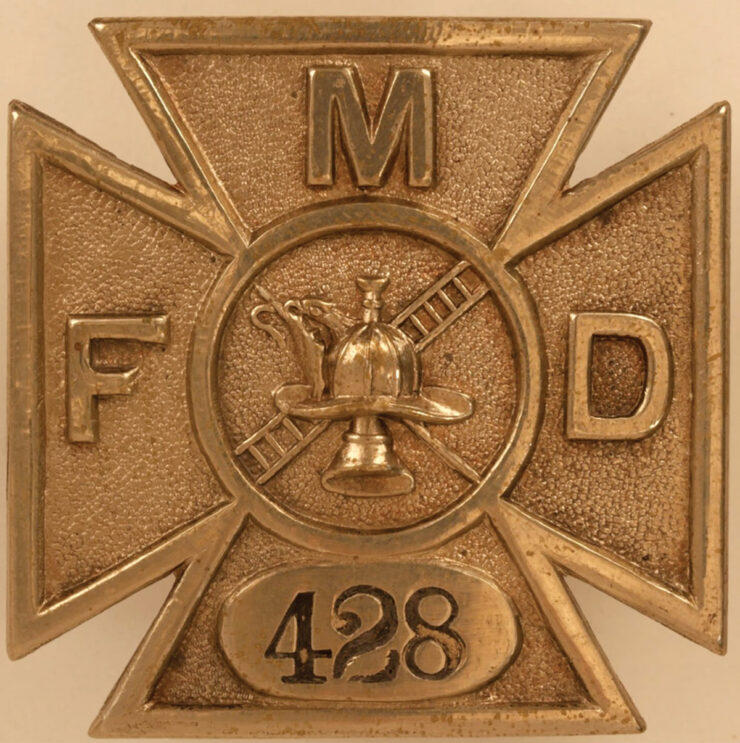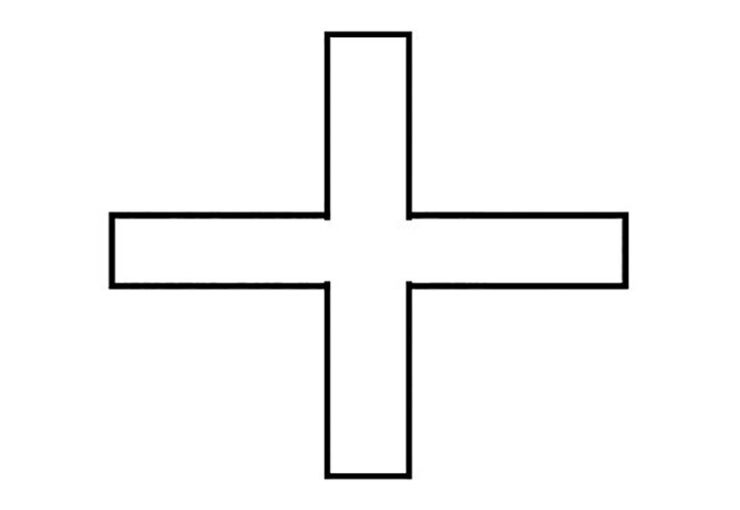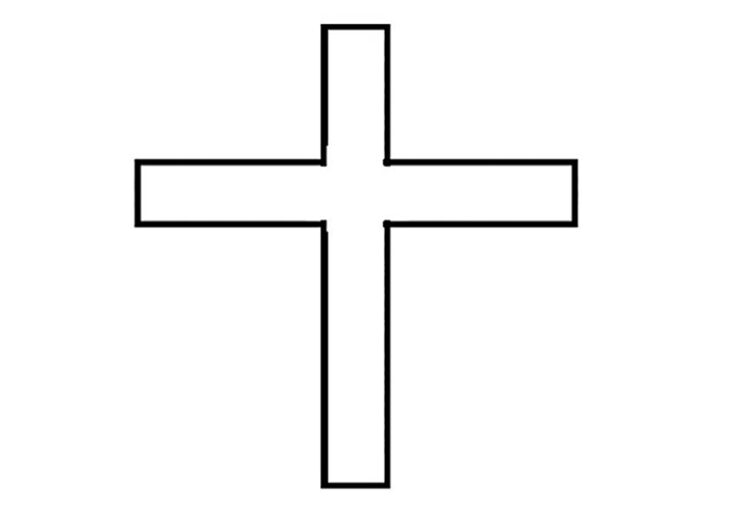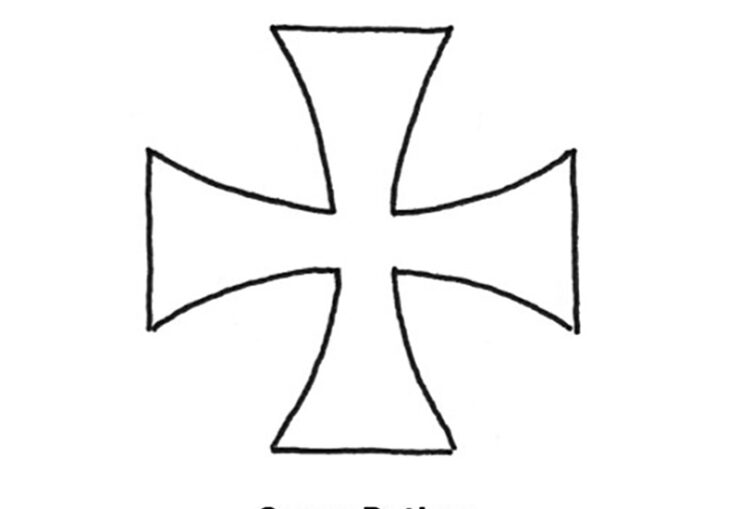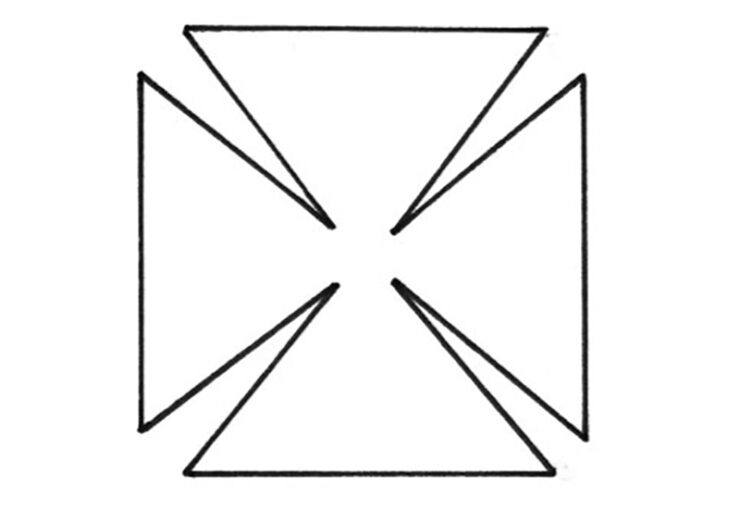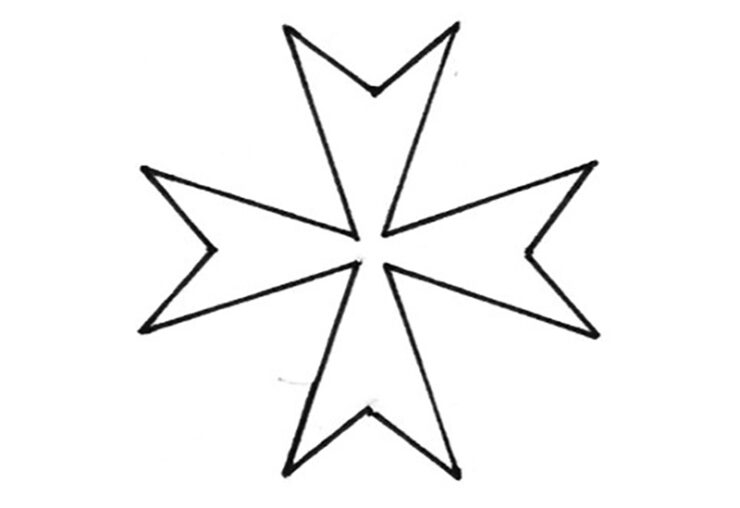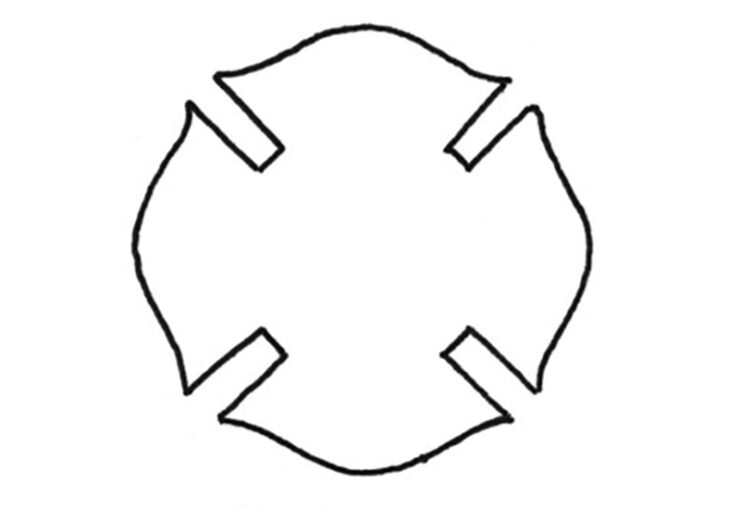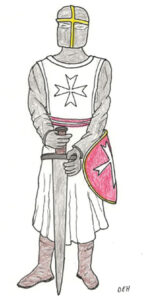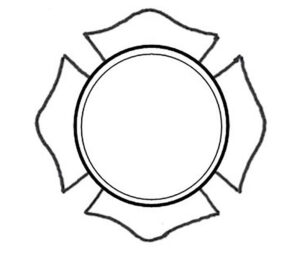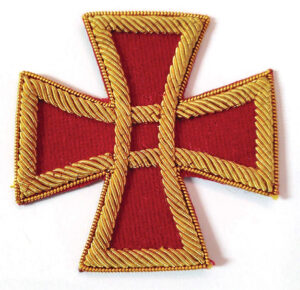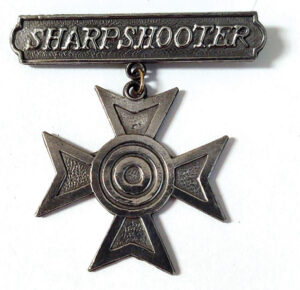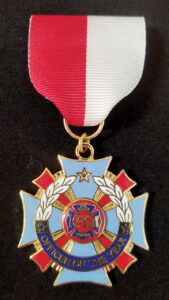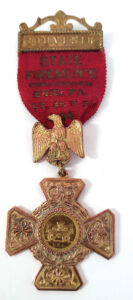One of the most identifiable symbols of the United States fire service is the Maltese cross or sometimes called the Firefighter’s cross. Though it may be thought of as a universal symbol of the fire service, it is uniquely interconnected to the U.S. fire service. How this graphic symbol became a prominent representation of America’s fire service and the principles it represents is another remarkable part of fire service history.
Despite its prominence, the current Maltese cross has a somewhat mysterious history or origin. Many fire departments’ or fire organizations’ websites list some brief annotated history of how the Maltese cross came to represent the fire service. In reviewing these stories most seem to be a repeat of an oral tradition that has been passed around in the fire service. Though there is some rationale for parts of the history related to this oral tradition, there is much more to the story along with some differences in interpretation regarding the Maltese cross.
We will find some of the roots of the Maltese cross may be related to knights and military lineage. It has been said that the fire service itself is similar to the military. The International Fire Service Training Association (IFSTA) describes the fire service as a “paramilitary organization because its organizational characteristics closely resemble those found in the military.”1 Among these characteristics, IFSTA lists: “a command structure; ranks to define positions; and uniforms, badges, and symbols.”2 As a paramilitary organization, the fire service has its own culture that is based on history and traditions. As we have seen in the previous history articles in this series, traditions and culture have played a significant role in propagating operational and equipment changes in the fire service. This also helps drive beliefs and oral traditions. One of these traditions is the “Maltese cross on uniforms and equipment.”3
In this article, we will be examining some religious and cultural history related to firefighting and the remarkable metamorphosis and adoption of the Maltese cross as a symbol of the American fire service.
Definitions and Terminology of Symbolic Crosses
First, we need to have some understanding of the definitions and origins of the various types of crosses that will be discussed from a religious and historical perspective. We will be looking at five different versions.
According to Britannica, “there are four basic types of iconographic representations of the [religious] cross.”4 Two of these are more commonly seen, the “crux quadrata” (Latin for Greek cross) bears a design composed of a horizontal and vertical bar crossed at the center at 90 degrees producing four arms of equal lengths. The other is the “crux immissa” (Latin for Latin cross) which is also of a horizontal bar and vertical bar crossed design, but “whose base stem or arm is longer than the other three arms.”5 For a visual reference of these and the following crosses see the accompanying depictions of crosses. A note of reference, all crosses could also be embellished in art and form, the ones shown are basic drawings.
In researching the fire service cross or Maltese cross, three different cross designs are consistently referenced. These are the Maltese cross, the cross pattee, and the cross formee.
The cross pattee is French for “la croix pattée, it translates to footed cross”. It is described as a cross with “non-indented ends, but their broadness and narrowness towards the center can vary. Some flare in a straight line, while others feature a curvy shape. Also, some variations might feature triangular arms that come close to filling the square.”6
The cross formee, coming from French or earlier Latin (formare) origin, and is defined as “of a heraldic cross.”7 It is described as an equal-armed cross with arms narrow at the center and wider at the ends.”8 Though it is sometimes mentioned separately, its design and description are very similar to the cross pattee. From one perspective, it could be used to describe all the later variants of the original St. John/Maltese cross and the cross pattee as those being the former in the lineage and all changes and embellished crosses stemming from them.
So what is the original Maltese cross? As will be explained later in the article, a distinctive cross was used to identify Christian knights in armor on the battlefield. Starting with the Christian cross various orders of knights looked to develop distinctive crosses of their own. The Order of the Knights of St. John first came into prominence in the medieval world sanctioned by the Pope to protect travelers. Eventually, they transitioned from a hospice role to a hospital (medical) mission and become the hospitallers and then finally transitioned into the Knights of Malta. Their emblem or symbol was a cross made up of four long narrow arrowheads or sometimes called spear points, with the points turned inward to the center forming a cross. Following the design of the crux quadrata (Greek cross), the four arms of the cross formed by the arrowheads were of equal lengths. The National Fire Protection Association’s (NFPA) book, Fire Terms, A Guide To Their Meaning and Use, published in 1980, defines the Maltese cross as “the 8-pointed heraldic symbol of the fire service, worn as a badge by most firefighters, and derived from the cross of the Knights of Malta.”9 The accompanying illustration in the book resembles the St. John’s cross. The true Maltese cross is not the cross shape we normally see today in fire service emblems.
Fire Service Maltese Cross
Today when the fire service refers to a Maltese cross it is the uniquely American design version that is also sometimes called the Firefighters’ cross. It is similar to other historic cross symbols in that it has four arms of the cross with eight points, but differs in having a curved arch between the points.10 The arms of the cross are equal in length (based on the Greek cross), and each arm is wide at the outside or top and narrows toward the center.11 In reality, this feature is more distinctive of the cross pattee than the Maltese cross.12 However, not all fire service crosses used as emblems or patches have a curved arch, some may be a straight line between points. Regarding the curved arch between the points, oral tradition has it that rounded edges or the “bump” on the ends of the cross represent unfolded angel wings. This feature represents the concept of both the angels that protect the firefighters in their dangerous service, as well as depicts the firefighters as saving angels to the citizens in their efforts to protect them from fires and disasters. For a visual representation of one of the more common examples of a Firefighters/Maltese Cross see the accompanying graphic.
So where did it all begin and what is the history of the development of this symbol?
It Began With A Cross
In this historical investigation of the origins of the fire service’s Maltese cross, we need to review the historic and religious significance of the cross. This article will not delve into depth on religious theology, but we do need to briefly review the religious aspects of the cross in history. Especially for those who slept through school history class or religious education during worship services.
According to scholars, the image of a cross was used by primitive people throughout pre and early history. The cross shape was held by many to be a symbol of the tree of life. It developed a negative connotation during Roman times as a means of execution through crucifixion. However, through the accounts of the four Gospels in the Bible over time the cross has become a prominent symbol to represent the Christian religion. The Encyclopedia Britannica defines the cross, as “the principal symbol of the Christian religion, recalling the Crucifixion of Jesus Christ and the redeeming benefits of his Passion and death. The cross is thus a sign both of Christ himself and of the faith of Christians.”13
As we have already covered, there are two more commonly seen religious crosses, “the crux quadrata, or Greek cross, with four equal arms; [and] the crux immissa, or Latin cross, whose base stem is longer than the other three arms.”14
In review, of various Christian crosses in history, many variants and embellishments were added or modifications made to the base design. An example of this is in the heraldic crosses.
Early Christians used various symbols to secretly identify themselves, including an outline of a fish coming from the Greek “ichthys.” This is said to have been used as early as the first century.15 The cross came to prominence in the Christian church through the Roman Ruler Constantine in the fourth century.
Constantine became the empire’s senior ruler resulting from a military victory in 312. He had a dream regarding his victory and in the dream, “Constantine had fought under the sign of the cross; he attributed his victory to the Christian God and soon afterward toleration and imperial favor were given to Christianity.”16
Constantine was successful in uniting the Empire through various military campaigns using the cross as his military standard. Constantine as Emperor, “abolished crucifixion as a death penalty and promoted, as symbols of the Christian faith, both the cross and the Chi-Rho monogram of the name of Christ. The symbols became immensely popular in Christian art and funerary monuments from c. 350.”17
So from these historical events, we can see the cross being used as both a Christian religious symbol and as a military one stemming from its religious origins.
The Code of Chivalry, Malta, and Royal Order
In medieval times came the rise of the knight and the code of chivalry. Several reference sources allude that the idea of the Chivalric Code was to try and control knights and armies and keep them in check. The code was a guide to exemplify the virtues and values of a true Christian knight, though probably rarely achieved in medieval times. The code varies over time and with numerous rulers and military orders. Since our historical context will focus on the Knights of St. John, who will become the Knights of Malta, we will focus on their code. The Order of St. John used a white eight-pointed cross as a symbol (we will look in more detail later regarding this cross). Each of the outer points is said to represent one of the “eight Beatitudes according to Saint Matthew and the eight virtues that a member of the Order must possess: loyalty, piety, honesty, courage, honor and glory, contempt for death, solidarity towards the poor and the sick, respect for the Church.”18 However, we find that the Beatitudes in the Book of Mathew in the Bible are different than the virtues listed by the Knights of Malta.19
Along the way, these values have changed and the current version of the code is based on a version from the British Royal Order that is more secular in nature. According to the current version associated with the Maltese/Firefighter’s cross “the meaning behind each point has changed to become observation, tact, resource, dexterity, explicitness, discrimination, perseverance, and sympathy respectively.”20
So it might be said that this last code listed has a generic enough nature to apply to a military code of honor or values, as well as a fire service “paramilitary” code of honor, depending on how each “point’s” construct is applied. Many fire service websites list these values and attempt to explain each in a firefighting context. No matter which version, the concept of the concern, care, and protection of others certainly exemplify the fire service concept of the protection of others before one’s self.
The Crusades
Bear with the continuing history lesson, we are getting there. Part of the concept of chivalry was the idea of the knight to pay penitence for his sins. One way they might do this was by a trip to the Holy Land and more specifically the City of Jerusalem the center of the Christian faith (as well as Judaism, and Islam). In medieval times this could be a dangerous journey through untamed lands and warring factions. So some orders of knights were sanctioned to protect travelers on these holy pilgrimages. Along comes the Order of the Knights of St. John the Baptist, or soon to be the “Knights of the Order of the Hospital of St. John of Jerusalem.”21
Following their success in establishing hospices for travelers and participation in the Crusades of 1080, the order “obtained Papal Sanction.”22 Along with resting places for pilgrims, they established a hospital in Jerusalem and other cities to care for the sick and wounded. In addition to the continued care of the sick and poor, they developed a “wing of brother Knights probably in imitation of the Templars” to fight in the Crusades.23 The order was divided into three ranks in 1118, composed of hospitallers (medical mission), men at arms (military mission), and chaplains (religious ministry mission).
The armor worn by knights during the early Crusades was of chain mail and consisted of a “hauberk, or coat of mail,… sometimes accompanied by leggings of mail.”24 Under this, they wore a padded jacket. To distinguish what order they belonged to, the Knights of St. John wore a surcoat with “a white cross on a red ground – ‘The white Cross of Peace on a blood-red field or War’.”25 This was the origin or original cross that would become a Maltese cross as mentioned earlier, four long narrow arrowhead shapes with the points turned inward to the center to form a cross with arms of equal length.
During the Crusades, the European knights encountered Greek Fire in battle. Greek Fire was the name “applied to any sort of incendiary weapon, including those used by Arabs.”26 It was “made from Arab petroleum and a mysterious blend of chemicals.”27 It could be hurled in clay pots as grenades, pumped through hoses, or poured down on attackers from city walls.
There is no doubt that the Knights of St. John/Hospitallers were sanctioned as a medical unit operating a hospital and caring for wounded Knights, as well as others. Their military arm also participated in the battles of the Crusades. Though the hospitallers were there to treat the sick and injured from the battles, there is little if any factual documentation that they were on the battlefield to specifically extinguish knights that were subjected to the weapon of Greek Fire. This again may be an added part of the story in oral tradition to tie hospitallers to the fire service. In reality, both sides of the conflict in the Crusades used Greek Fire. The Crusaders used it to drive out the Saracens and capture the city of Jerusalem in 1099.28
Later when Jerusalem fell to invaders the Knights of St. John/Hospitallers escaped to Cyprus and then went on to conquer Rhodes. For a short time, they were known as the Knights of Rhodes. When Rhodes fell in the 1500s, “they received the island of Malta from Charles V [Holy Roman Emperor].”29 This is how the Knights of St. John became Knights Hospitallers, Knights of Rhodes, and finally Knights of Malta. Taking with them their symbol or St. John’s cross as they moved. That cross would eventually be referred to as the Maltese cross.
St. Florian Cross
There is one more cross we need to reference, the St. Florian Cross. It may be asked why we did not review this with the earlier history and definitions of crosses. One of the main reasons is that, though there are numerous mentions of this cross on the internet, there is little in the way of a documented account of its history. Saint Florian is a venerated Catholic Saint who is the patron Saint of Fire Fighters. We have covered the history of St. Florian in the article “International Firefighters Day” in the May 2021 issue of the FFAM magazine, but let’s do a brief review.
St. Florian was born in 250 AD in what is now Austria. He served in the Roman Legions. Even though Christianity was not tolerated by the Roman government at the time, Florian became a Christian. He refused to persecute Christians and was ordered put to death, originally to be burned to death, but the sentence was changed to drowning. Legend has it that during his life St. Florian put out a massive fire with only one bucket of water, saving a village from ruin. For this and his other protective acts and being martyred, he was canonized as a Saint.30
In historic religious relics (paintings and statues) depicting St. Florian, we find that he is traditionally portrayed in Roman Centurion uniform pouring water from a chalice or pail onto a small building on fire. He may hold a more traditional cross, of Greek or Latin shape, in his other hand. Also, he may have a banner that includes a simple cross depiction, or cross on his armor. None of these are in the shape of the Florian cross we see today. The Austrian monastery of the St. Augustine’s Order of St. Florian, with roots back in a group of priests in the 5th century, displays traditional religious crosses, not the depiction referred to as a Florian cross.31
Reliquarian, a website for the “exploration of saints, their relics, and their iconography in art”, provides some relevant information on the St. Florian cross. This cross is described as “four triangular arms, of equal length, that are rounded at each terminus and that taper toward the center.”32 Just as we have seen with the Maltese or Firefighter’s cross, the Florian cross may also have variations and embellishments, such as points in the center of each of the curved arms. Reliquarian explains that the design is “sui generis” (Latin phrase meaning unique or a class by itself), “though possibly inspired by the Maltese cross.”33 Exhaustive searches did not verify the date this design came into being. However, it appears that the design came about after fire departments began using a Maltese/Firefighter cross design following the New York Fire Department’s (FDNY) lead. The NYFD also established two Holy Name Societies (HNS) one in 1911 and one in 1922 based on Catholic doctrine and to provide spiritual support for active and retired members of the fire department. These HNS both “utilize the basic Maltese cross as their logo,” and “in the center of the badge is a silhouette of Christ with a halo and crucifix.”34 This may have led to the concept of the St. Florian cross, a Maltese cross with St. Florian depicted in the center. Regular Catholic medallions depict St. Florian in a circle or oval. The image of St. Florian in the center of a Maltese/Firefighter cross appears to be a 20th-century design development perhaps inspired by New York HNS and obscured by various oral histories or quasi-narratives.
Military and Other Uses of the Cross
Following in the tradition of the knights of the Crusades and middle ages, the military of numerous countries and martial units have used variations of different crosses as symbols or insignia.
We will find later in this article that during the Civil War between the United States and the Confederacy (1861-1865) that many military units used various cross symbols as identification patches or badges. One of these will be the U.S. Army Fifth Corps under Colonel Ellsworth using a cross pattee design but called a Maltese cross.35
Sometimes crosses were also used for commendation medals. According to J.A. Rhodes in his book The Fire Service History, Traditions & Beyond, “the Royal Warrant for the institution of England’s Victoria (equivalent to the U.S. Medal of Honor) states that it ‘Shall consist of a Maltese Cross of bronze,’ but it is without doubt that it too is a cross pattee [in design]”.36 Rhodes dedicates a whole chapter of his book to “The Maltese Cross”, however, his statements appear to be based on mostly oral tradition than research as he does not reference any sources.
In other cases, variants of crosses have been used in the military as qualification badges. One example is the U.S. Army’s use of a cross pattee for a “sharpshooter” qualification badge. With changes over time, it is basically a cross pattee with multiple diminishing circles (targets) in the center. Certainly, the ancient knights would have prized accuracy in the use of arms and weapons as a valued and recognized skill, just as more modern military units.
Besides being used as a badge or patch in the fire service, the Maltese cross symbol may also be used on award medals and other honors of distinction. Miniature embroidered crosses are used on the sleeve of dress uniform coats for years of service designation, usually one cross for every five years of service.
The Order of St. John and the Order of the Knights of Malta still operate medical missions around the world displaying their original crosses as a symbol of the humanitarian mission. St. John’s Ambulance Service in Canada uses the St. John or Hospitaller’s cross, and the medical missions of the Knights of Malta still operate under the original arrowhead type Maltese cross banner. So we see the various crosses from medieval times continuing to be used as symbols or insignia, paying tribute to knightly virtues and spiritual principles linking the past to the present.
The American Fire Service Maltese Cross
As we have seen from the previous histories, crosses have been used throughout time as personal, religious, organizational, or military emblems. As part of this history, it can be seen that there was confusion about what the actual Maltese cross looked like. So one can imagine how difficult it is to identify the first use of a Maltese-type cross in the American fire service. However, many references may suggest it is linked to a volunteer fire company. One of the well-researched studies on fire badges, Gary Urbanowicz’s Badges of the Bravest, suggests that the first use of the “Maltese cross was by a New York volunteer fire company, the Protection or: Honey Bee” Engine Company 5.”37 The badge is reminiscent of the cross pattee and appears to be handmade.
A definitive reference to the use of a Maltese cross as a badge comes from the Rules and Regulations of the Metropolitan Fire Department of New York. The “Rules” require: A white metal Maltese cross, with the appropriate emblems of the department in the center, the letters “MFD” and the number (numerically) on the points, and placed in the center of the front of the cap.38
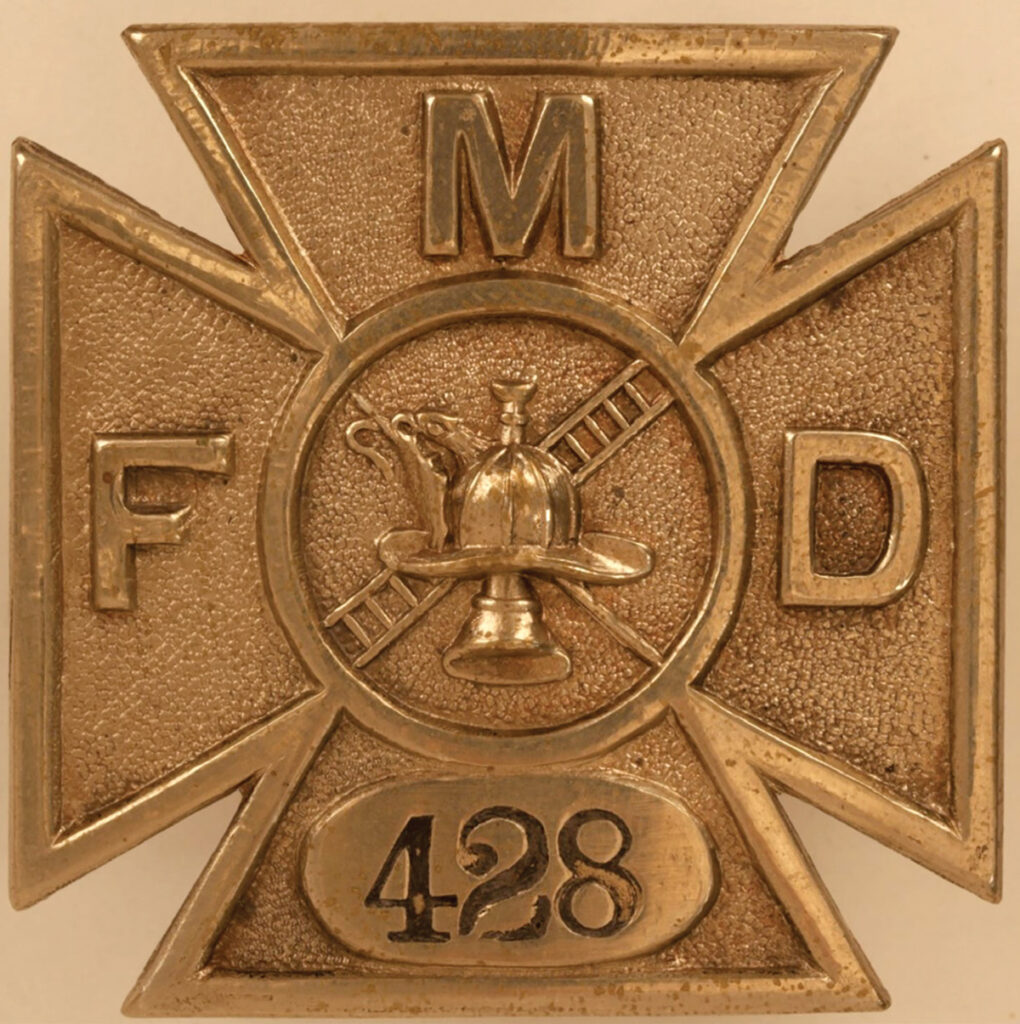
This badge has a strong resemblance to the cross pattee. A picture of an example of an early MFD badge, courtesy of the New York Fire Museum, accompanies this article. Also, the term “white metal” refers to “a tin-based (greater than fifty percent) alloy which gives it its silver or gray color.”39
Another specific bit of quick history here. In 1865, at the end of the civil war, the New York state government enacted a law to create “a Metropolitan Fire District and Establish a Fire Department Therein.”40 This included Brooklyn’s east and west divisions and replaced the problem-plagued volunteer fire departments establishing the MFD Because of the war, the volunteer departments in New York were short on manpower and had trouble turning out on calls, and were politically mismanaged. The replacement of volunteers took until 1869, and in 1970 the city regained control of the fire department and changed the name to “Fire Department of the City of New York (FDNY).”41
As quoted above, the early records of the MFD (that would become the FDNY) identified a Maltese type cross as an organizational symbol of their department. As we have found in other research and published in previous articles, the FDNY has played a significant role in instituting equipment and procedures that would early on establish the beginning traditions of the American fire service (see “Leather Fire Helmets, A Traditional Part of Fire Service History”, FFAM Vol. 65, Issue 2).
So who was behind selecting this style badge for the new MFD? Some accounts relate that it was possibly influenced by John Cregier, who served under Colonel Ellsworth. Ellsworth commanded the Fifth Corps which included a fireman Zouaves unit during the Civil War. The symbol of the Fifth Corps “was the Cross Pattee, commonly called the Maltese cross.”42 Cregier had been an Assistant Chief Engineer in New York but only served a short time in the Army in 1861 before returning to the fire department. Years later he could have selected the Fifth Corps’ emblem as a tribute to his former commander who had died in the war. However, there is no official record of this. Another story comes from the previously mentioned New York volunteers Engine Company 5’s Maltese cross badge. The story goes that Engine 5’s Foreman Murray Ditchet and Joshua Abbe may have played a role. Ditchet was also a police captain who first suggested a badge be issued to firemen in 1855. Abbe became one of the first commissioners of the paid MFD and may have suggested Five’s symbol.43 Several others stories are out there but don’t appear credible. Whether the influence came from the military or civilian side it is possible that both were influenced by the original Knights of St. John and their recognition for discipline and valor, along with their charge to protect life and property.
In the years that followed, the MFD and later the FDNY had several different units and groups that had variations of the Maltese cross. In Urbanowicz’s book, Badges of the Bravest can be seen the plethora of badge designs and the quick transition to a more modern American design of the Maltese cross with curved arches and narrower points. It appears this new design was quickly adopted by surrounding fire departments in the northeast and then quickly spread across the United States in the late 1800s and early 1900s.
Though there is no apparent documentation in the written record, an empirical conclusion could be made that the early American military units and the fire service were seeking to create a link to the history of the Crusades and the revered knights to establish a continuing tradition by choosing the Maltese cross as an emblem. By referring to the symbol they chose as a Maltese cross instead of a plain cross figure, they were picking what they considered a religious and heraldic symbol with its implications and traditions. Even though the shape was not the original St. John’s/Knights of Malta cross, it was chosen based on that perceived lineage.
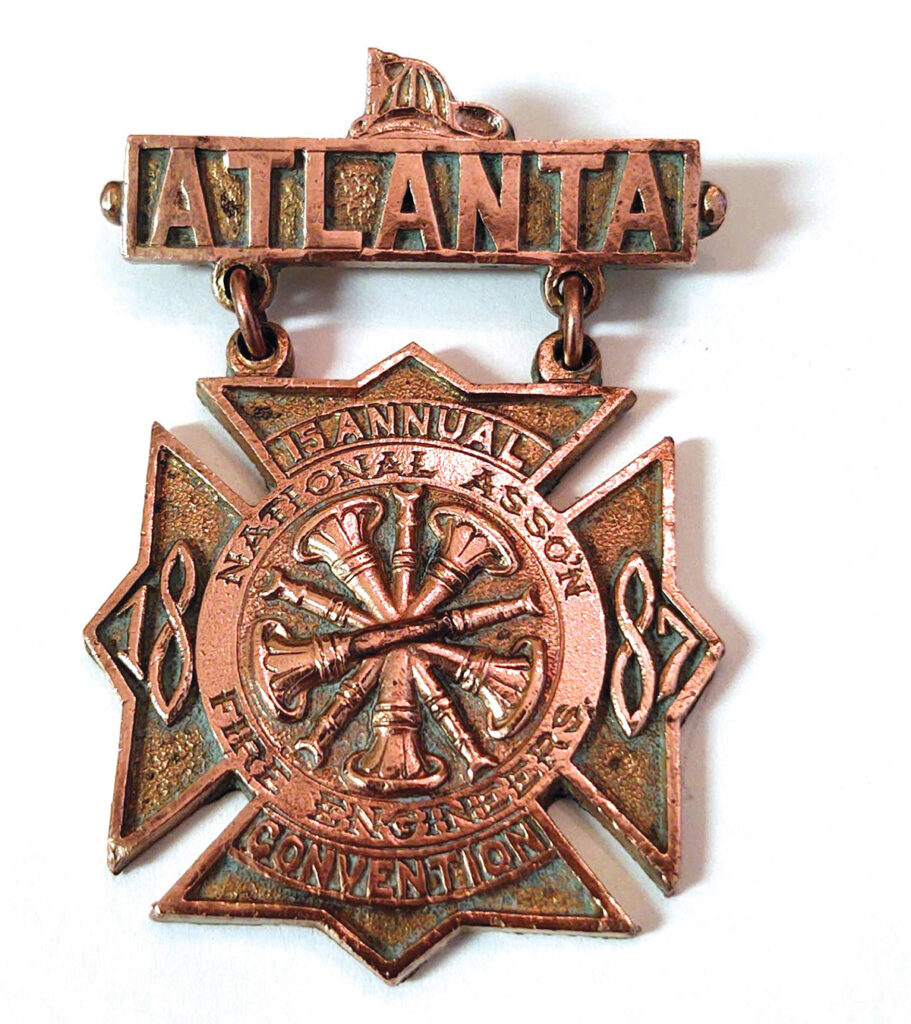
Variants of today’s fire service Maltese cross may have additional fire service symbols placed within the center or on the “wings” of the cross. The center is usually considered as the place of honor for the placement of a symbol of the organization or the designation of rank or specialization of the individual. The top or bottom wing may also include a number or tab to identify the badge and the firefighter to which it was issued. Tradition plays a predominant role in the fire service. To each generation of firefighters and citizens, it represents the dedicated and unchanging mission of the fire service, that of protecting life and property. The Maltese cross is a firefighter’s badge of honor, signifying that they work in a profession or avocation that exemplifies duty, honor, and courage.
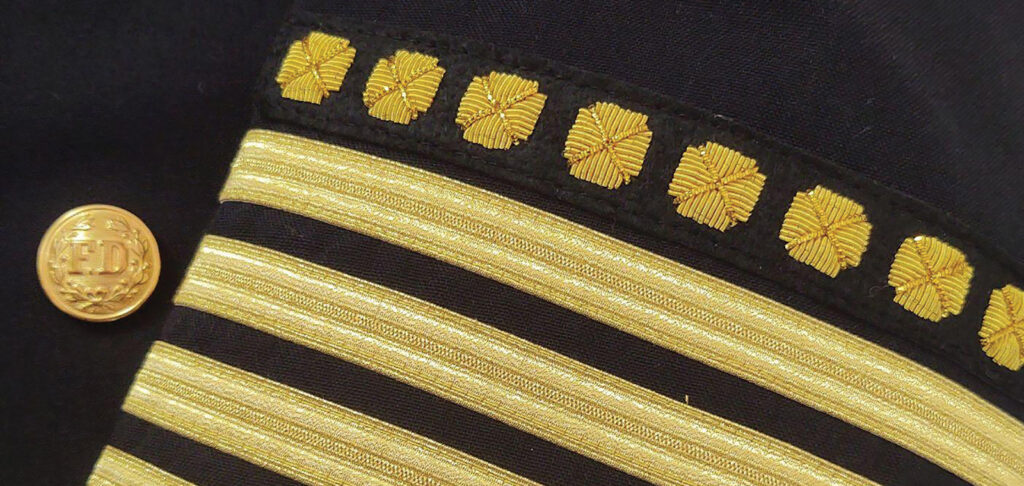
Conclusion
In researching this part of fire service history, internet searches turned up many fire departments and fire organizations that provided some explanation or history of the Maltese cross as the fire service cross. They usually had bits and pieces of the above story but did not document where the information came from. Most appear to be in the oral tradition of the fire service. An extremely limited number even tried to explain the morphing of the design to its current configuration from the original St. John’s cross. There are even a couple of articles that claim the fireman’s cross is purely linked to military heritage symbols and has no relation to the Knights of St. John or the Christian references.
Each person is entitled to their viewpoint, however, there is substantial rationale to link the Christian concepts of protection of the poor and needy and the chivalric virtues of the knights of protection of life and property to the founding principles of the American fire service. The cross, the Crusader’s cross involving the Knights of St. John and their transition as hospitallers and the Knights of Malta, and the Christian and chivalric codes that formed the military ideals of honor, all laid the foundation for the traditions of the fledgling early American fire service. This would become the concept of placing others’ safety before oneself, the protection of life and property, the tenants of which form the values and traditions of the American fire service. Based on these ideals, the historic nature and tradition surrounding what is called the Maltese cross today make it undeniably the iconic symbol of the American fire service.
Endnotes
1
Frederick M. Stowell, Project Manager/Writer, and Lynne Murnane, Senior Editor, Essentials of Fire Fighting and Fire Department Operations, Six Edition, International Fire Service Training Association (IFSTA), Fire Protection Publications, Oklathoma State University, 2013, p. 18.
2
Ibid.
3
Ibid, p.10.
4
Britannica, T. Editors of Encyclopaedia. “cross.” Encyclopedia Britannica, May 5, 2021. https://www.britannica.com/topic/cross-religious-symbol.
5
Ibid.
6
Nina Jay, “What Is the Cross Pattée? – History and Meaning”, Symbolsage Understanding the World Through Symbols and Mythology, website: https://symbolsage.com/what-is-the-cross-pattee/ , accessed 4/2022.
7
Merriam Webster, “formee”, website: https://www.merriam-webster.com/dictionary/form%C3%A9e, accessed 4/2022.
8
Ralph W. Burklin, and Robert G. Purington, National Fire Protection Association’s (NFPA) Fire Terms, A Guide To Their Meaning and Use, NFPA, Boston, MA, 1980, p. 45.
9
Ibis, p. 118.
10
“Maltese Cross (Similar Crosses)”, Wikipedia, Wikimedia Foundation, Inc., https://en.wikipedia.org/wiki/Maltese_cross, accessed April 8, 2022.
11
Burklin, and Purington, Fire Terms, A Guide To Their Meaning and Use, p. 118.
12
Ibid.
13
Britannica, T. Editors of Encyclopaedia, “cross.”
14
Ibid.
15
Blair Parke, “Ichthys, The Christian Fish Symbol: 5 Origin and History Facts Bible Study Tools”, Bible Study Tools, website https://www.biblestudytools.com/bible-study/topical-studies/the-christian-fish-symbol-origin-and-history-facts.html posted Jan. 3, 2020.
16
E. A. Livingstone, “Constantine the Great”, The Concise Oxford Dictionary of the Christian Church, 3rd Edition, Oxford University Press, Oxford, England, 2013, p. 136.
17
Britannica, T. Editors of Encyclopaedia. “cross,”.
18
“The Eight-Pointed Cross”, Sovereign Military Hospitaller Order of St John of Jerusalem of Rhodes and of Malta, Rome, Italy, website: https://www.orderofmalta.int/history/eight-pointed-cross/ , accessed April 14, 2022.
19
Holy Bible, New Testament, KJV, Mathew, Ch.5.
20
Mike Pertz, “The History of The Maltese Cross In The Fire Service”, Firefighter Now, https://firefighternow.com/maltese-cross-firefighters/ , accessed April 14, 2022.
21
E. A. Livingstone, “Hospitallers” The Concise Oxford Dictionary of the Christian Church, p. 268.
22
Ibid.
23
Ibid.
24
Ernle Bradford, The Shield and The Sword, Open Road Integrated Media, New York, 2014, p. 32.
25
Ibid, p.16.
26
“Greek Fire”, Wikipedia, Wikimedia Foundation, Inc., March 29, 2022, webpage: https://en.wikipedia.org/wiki/Greek_fire#:~:text=The%20impression%20made%20by%20Greek,the%20Chinese%2C%20and%20the%20Mongols, April 17, 2022.
27
W. Fred Conway, Firefighting Lore, Fire Buff Publishers, New Albany, IN, 1993, p.47.
28
Ibid, p.48.
29
E. A. Livingstone, “Hospitallers” The Concise Oxford Dictionary of the Christian Church, p. 268.
30
“St. Florian”, Wikipedia, Wikimedia Foundation, Inc., March 29, 2022, webpage: https://en.wikipedia.org/wiki/Saint_Florian .
31
“History of the Religious Order”, The Monastery of the Canons Regular of St. Augustine’s Order at St. Florian, website: http://www.stift-st-florian.at/en/augustines-canons/unser-orden/history.html, accessed 4/15/22.
32
“Saint Florian: Saint of Fire and Flood”, Reliquarian, website: https://reliquarian.com/tag/florian-cross/, article posted July 27, 2013.
33
Ibid.
34
Gary R. Urbanowicz, Badges of the Bravest, Turner Publishing Co., Paducah, KY/M.T. Publishing Co., Inc., Evansville, IN, 2002/03, p. 175.
35
Ibid, p. 22.
36
J.A. Rhodes, The Fire Service History, Traditions & Beyond, printed in the United States of America, Booklocker.com, Inc., copyright 2006, p.64
37
Urbanowicz, Badges of the Bravest, p. 35.
38
Ibid, p. 19.
39
Ibid, P. 28.
40
Ibid, p. 16.
41 Ibid.
42
Ibid, p. 22.
43 Ibid.
Photos
All photos and graphics are from the author, except the Metropolitan FD Badge courtesy of the New York Fire Museum.


